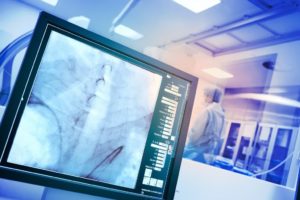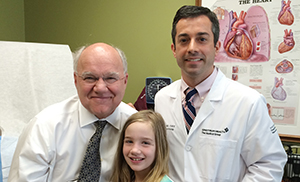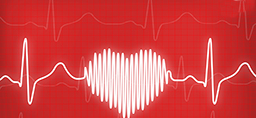
Your chest hurts. Your heart seems to be beating in a way that feels out of rhythm.
Could it be a heart attack? Or just heartburn?
A heart catheterization, also called heart cath or cardiac cath, can help your doctor get to the bottom of it.
The procedure is used to both diagnose and treat cardiovascular disease, Thomas Boyden, MD, director of preventive cardiology at Corewell Health, said.
During the outpatient procedure, a cardiologist inserts a small, flexible tube through a sheath into a large blood vessel—usually in the arm, but sometimes in the groin or leg—and then guides it into the main artery leading to the heart.
The relatively painless procedure lasts less than an hour for diagnostic purposes.
“Patients may undergo heart catheterization for a number or reasons including chest pain, abnormal stress test results, shortness of breath or excessive fatigue,” Dr. Boyden said.
Ultimately, the procedure helps doctors learn what’s happening in a patient’s heart blood vessels and can also provide information on heart valves and heart muscle. A doctor can sometimes even repair a problem, such as a blocked or narrowed artery from plaque, during the catheterization.
“Heart catheterization is a routine medical procedure performed every day. If the heart catheterization reveals complex disease, we have a Heart Team that meets every week to discuss the best treatment approach for those individuals,” Dr. Boyden said.
Before you go
A heart catheterization procedure requires a few preparatory steps.
First, don’t eat or drink for at least six hours before the test, or as your doctor requests.
Second, your physician may advise you to stop taking certain medications prior to the test. It’s especially important not to take blood thinners, which can cause excessive bleeding.
Some diabetes medications can cause side effects since the procedure uses contrast dye. Be sure to let your doctor know which medications you’re taking, or if you have any allergies to medications or IV contrast. You may want to take your prescriptions along so your doctor can review dosages.
When you’re there
A care team member will use local anesthetic to numb the area where the catheter will be inserted, and patients will receive moderate sedation through an IV.
“Moderate sedation helps our patients feel relaxed and calm but still allows them to follow simple directions such as taking a deep breath,” Dr. Boyden said.
The doctor will make a needle puncture or small cut into the skin to access a blood vessel and insert a sheath. The catheter fits inside the sheath and the doctor gently moves the catheter through the vessel to the origin of the heart arteries. The procedure is performed with a special type of X-ray called fluoroscopy to help visualize the arteries.
“We usually do this procedure in the artery of the arm to reduce the risk of complications, such as bleeding, compared to when we previously performed the procedure through the artery in the leg or groin,” Dr. Boyden said.
Once the catheter is appropriately positioned at the origin of the arteries of the heart, a physician injects dye through the catheter, making it possible to see any blockages on an X-ray.
If the artery appears blocked or narrowed, the doctor may perform an angioplasty or a percutaneous coronary intervention during the catheterization.
“A tiny balloon may be inflated inside the artery to reduce the narrowing. In many cases, this is followed by the insertion of a tiny metal tube called a stent,” Dr. Boyden said. “The size and location of the stent depend on the location and size of the blockage.”
For people who have diabetes, a surgical bypass may be safer than placing a stent, Dr. Boyden said.
Physicians can also widen a narrowed heart valve opening via catheter, a procedure called valvuloplasty.
Other treatments performed via catheter include heart biopsy, heart valve replacement of a defective valve and repairing congenital heart defects, such as tiny holes in the heart.
After the procedure
Fewer than 1% of patients experience serious complications during a diagnostic heart catheterization, Dr. Boyden said.
The area where the catheter was inserted may show a small bruise and feel sore for a day or two.
Your doctor will recommend follow-up care, if any, depending on what the procedure involved.
 /a>
/a>
 /a>
/a>
 /a>
/a>